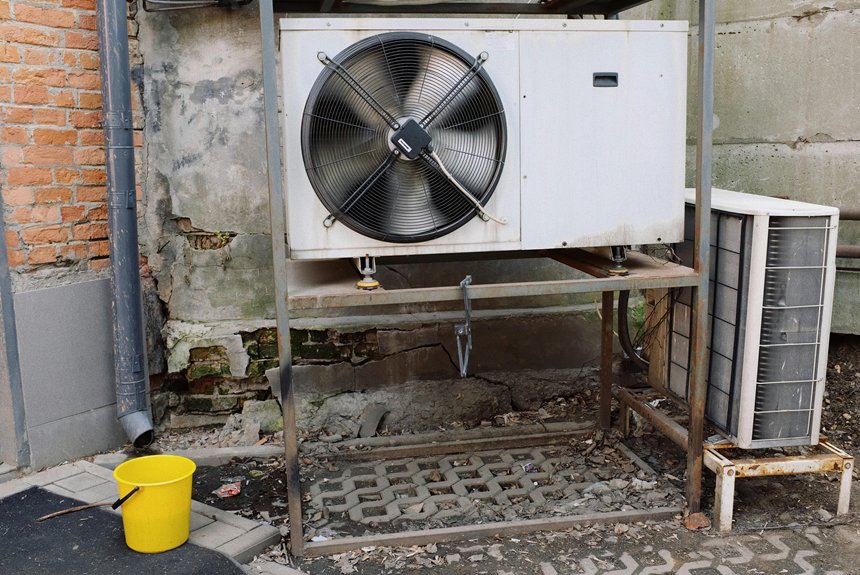The cost of a central air conditioning system can vary significantly based on several factors, such as the type of system, the size of the home, efficiency ratings, and the complexity of the installation. Basic units suitable for smaller properties may start at a certain price point, while larger or more efficient systems can command a higher price.
If upgrades to existing ductwork are necessary or if additional features like air purifiers are desired, these can further increase the overall costs.
For those considering modern, energy-efficient solutions or specific brands, obtaining detailed information can provide a clearer understanding of the expenses involved.
It is advisable to conduct thorough research and consult with professionals to ensure the best options for your specific needs and budget.
Factors Influencing Central AC Pricing
Several factors influence the cost of installing a central air conditioning system, and understanding them can help homeowners make informed decisions.
Different types of systems, such as ducted split systems, ductless mini-splits, heat pumps, and packaged units, vary in price due to their design and installation complexity. Heat pumps, for instance, tend to have a higher initial cost as they provide both heating and cooling functions.
The size of the system is also a crucial consideration; larger homes necessitate bigger units, which naturally increases the overall cost.
Energy efficiency ratings, such as SEER (Seasonal Energy Efficiency Ratio), play a significant role in pricing as well. Systems with higher efficiency ratings often come with a steeper price tag initially but may result in lower operating expenses over time.
Moreover, the complexity of the installation process, including the condition of existing ductwork or the need for electrical upgrades, can impact the final costs.
All these factors collectively determine the investment required for a comfortable and efficient central cooling system in your home.
Comparing Top Central AC Brands and Costs
When comparing leading central air conditioning brands, homeowners in the UK should take into account both the initial costs and the features that each brand presents. Carrier models are known for their efficiency and quiet operation, although they tend to be on the pricier side. Trane units, while often more expensive upfront, are celebrated for their durability and advanced technology, including variable-speed compressors. Lennox offers premium units that feature some of the highest energy efficiency ratings, prioritising both performance and noise reduction. For those seeking more budget-friendly options, Goodman and Rheem provide reliable air conditioning solutions at a more accessible price point, emphasising value for money. Bryant and American Standard occupy the mid-to-premium segment, offering a balance of performance, efficiency, and customer service. Ultimately, the decision on which brand to choose hinges on individual budget considerations, desired features, and expectations for long-term performance. Furthermore, purchasing from reputable brands can also impact the availability of warranty support and after-sales service. It’s essential to weigh these factors carefully to make an informed decision that best suits your home and lifestyle.
Additional Expenses and Installation Considerations
Installing a central air conditioning system involves more than simply purchasing the unit itself; there are several additional expenses and considerations that homeowners in the UK should be aware of.
These costs can encompass ductwork upgrades, specialised filtration systems such as HEPA filters, and added features like smart thermostats.
- Ductwork repairs or replacement may be required if existing ducts are damaged or outdated.
- Additional equipment, such as air purifiers or advanced thermostats, can elevate overall expenses.
- Complex installations, such as geothermal or solar systems, which necessitate specialised electrical work, tend to be more costly.
- Installation costs often vary based on the size of the home and the complexity of the system, influencing both labour and material expenses.
- Permits and inspections, which are necessary in some areas, can also add to the overall costs of installation, requiring homeowners to budget accordingly.
Understanding these factors ensures homeowners can budget appropriately and avoid unexpected costs during installation, paving the way for a smoother and more efficient process.
Conclusion
In summary, the costs associated with central air conditioning in the UK depend on various factors, including the size of the system, the brand, and the complexity of the installation. While leading brands provide efficient solutions, additional expenses such as ductwork and necessary permits can significantly increase the overall price.
It is essential to compare different models and take into account long-term energy savings alongside the initial costs.
Ensuring that the installation is carried out by qualified professionals is crucial for optimal performance and durability.
By understanding these elements, homeowners can make informed choices and select a central air conditioning system that meets their requirements and budget effectively.

